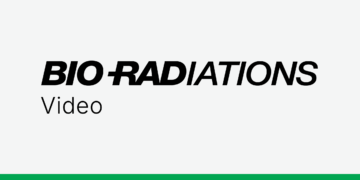
TGX Stain-Free™ FastCast™ Acrylamide Gel Casting
This short video demonstrates how you can access the unique benefits of Bio-Rad’s proprietary TGX Stain-Free Gel chemistry by hand casting your own TGX Stain-Free Gels in just a few quick and easy steps.

Cleaning the Nozzle Tip on the S3e™ Cell Sorter
In this short video, we show how to clean the nozzle tip on the S3e Cell Sorter.

Performing a Fluidics Hot Swap on the S3e™ Cell Sorter
In this video, we show how a fluidics hot swap can be performed without shutting down the S3e Cell Sorter.

Cleaning the Streams Camera Window on the S3e™ Cell Sorter
In this video we show you how to clean the camera streams window as part of routine maintenance for your S3e Cell Sorter.

Attaching a Dynaloop to the NGC™ Chromatography System
This video describes the three main steps in attaching a DynaLoop Sample Loop to the NGC™ Chromatography System to enable the injection of larger sample volumes: connecting the DynaLoop Sample Loop to the NGC Chromatography System, priming the DynaLoop Sample Loop, and creating a method in ChromLab™ Software.

Calibrating the pH Valve on the NGC™ Chromatography System
The NGC pH valve provides real-time, in-line monitoring of buffer pH. In this video, you’ll learn how to connect the pH valve to the NGC System, add it to the flow path, and calibrate the valve using buffers at two different pH values. Features of the pH valve include accessible calibration ports and easy bypass of the probe when the NGC System is being cleaned.

Removing Air Bubbles from the NGC™ Chromatography System
This video explains how to remove bubbles and/or reduce bubble formation in your NGC System. Tips to reduce bubbles include warming up your multiwave detector for 30 to 60 min before use and flowing buffer at 0.1–0.2 ml/min in the manual mode until a stable/flat baseline is achieved before starting a method. The system may also be flushed with 100% methanol or ethanol at purge speed, with columns out of line, to remove bubbles.

Using the Air Sensor on the NGC™ Chromatography System
This video describes the functions of the Air Sensor Module and how to connect it to the NGC Chromatography System. The NGC Air Sensor senses the end of sample or buffer and prevents the introduction of air into the system, which can damage columns and/or incur the loss of precious samples. Both small and large air sensors are available to fit the tubing being used. Steps for connecting the Air Sensor Module and associated air sensors are described including how to add the air sensors into the system flow path using ChromLab™ Software and the differences in using the air sensors in manual vs. method modes.

How to Design Hydrolysis Probes for qPCR
What’s the optimal melting temperature for a hydrolysis probe? How long should your probe be? And why should you avoid 5′ guanines like the plague? This episode answers these questions and gives you five simple tricks for designing the perfect hydrolysis probe.

Six Tips for Increasing the Reproducibility of qPCR Experiments
Follow these six simple tips and you’ll increase the reproducibility of your qPCR experiments.
